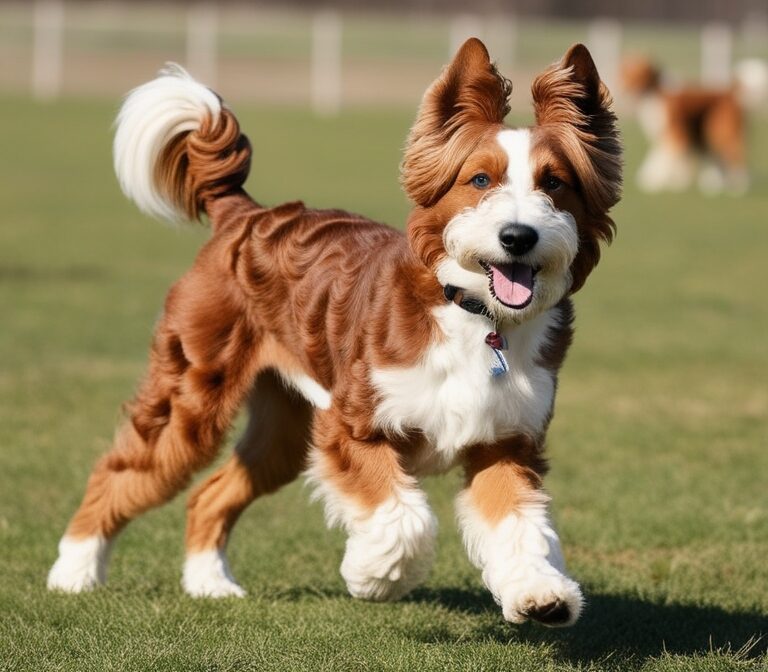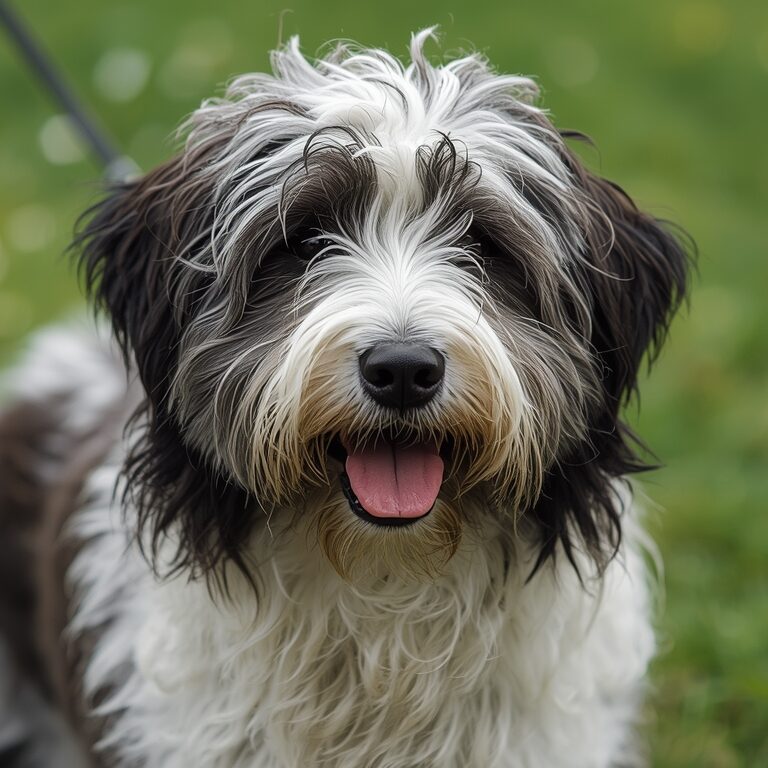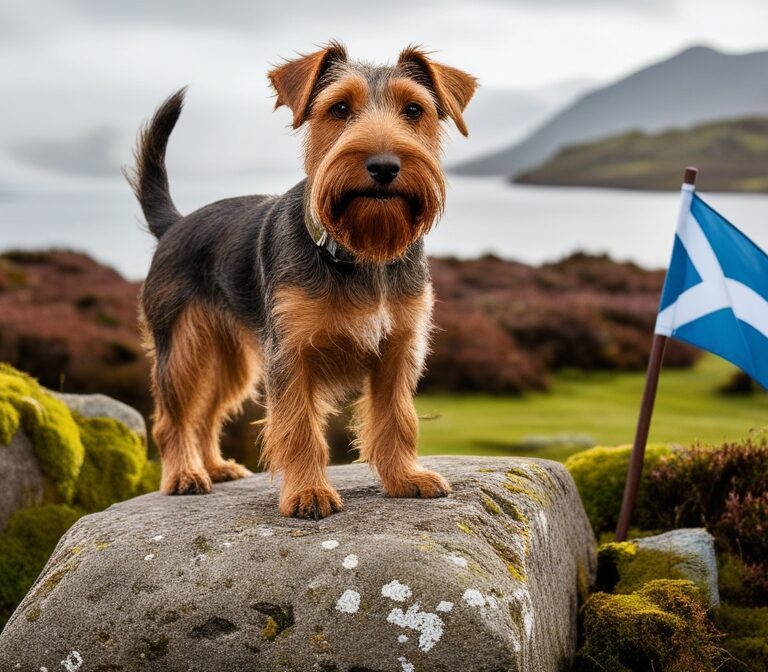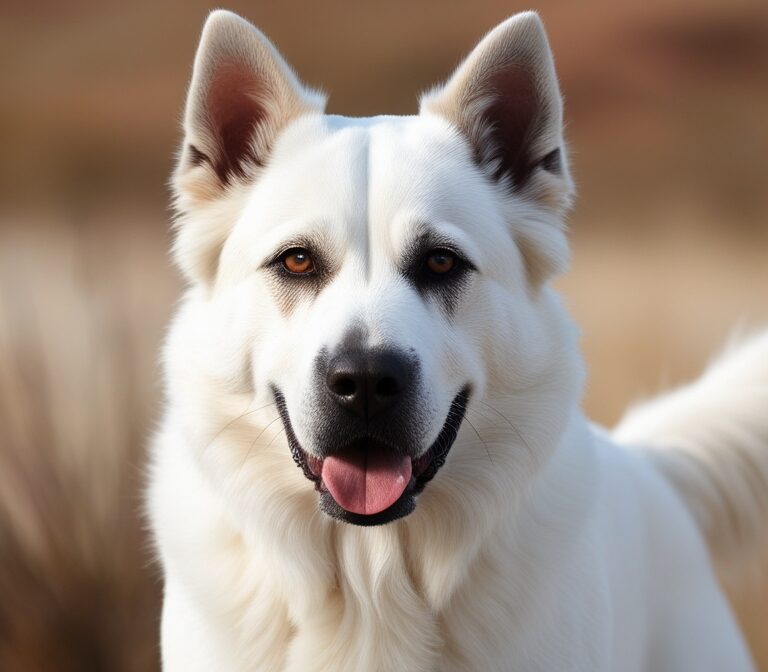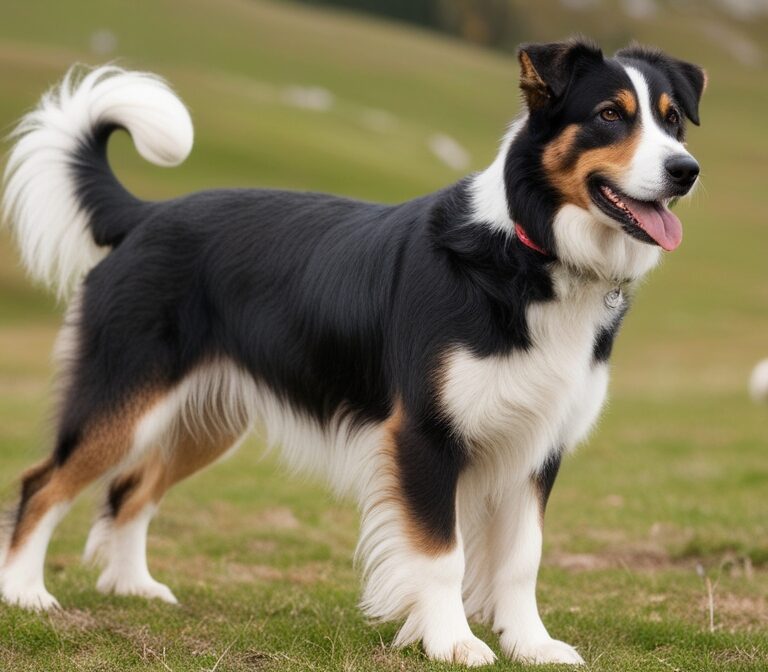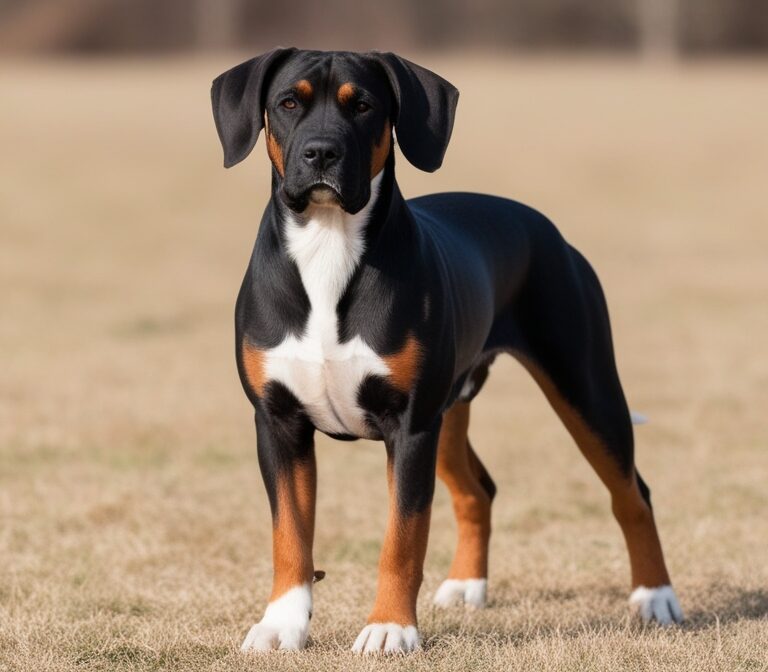Dogue de Bordeaux: Complete Guide to the French Mastiff Breed
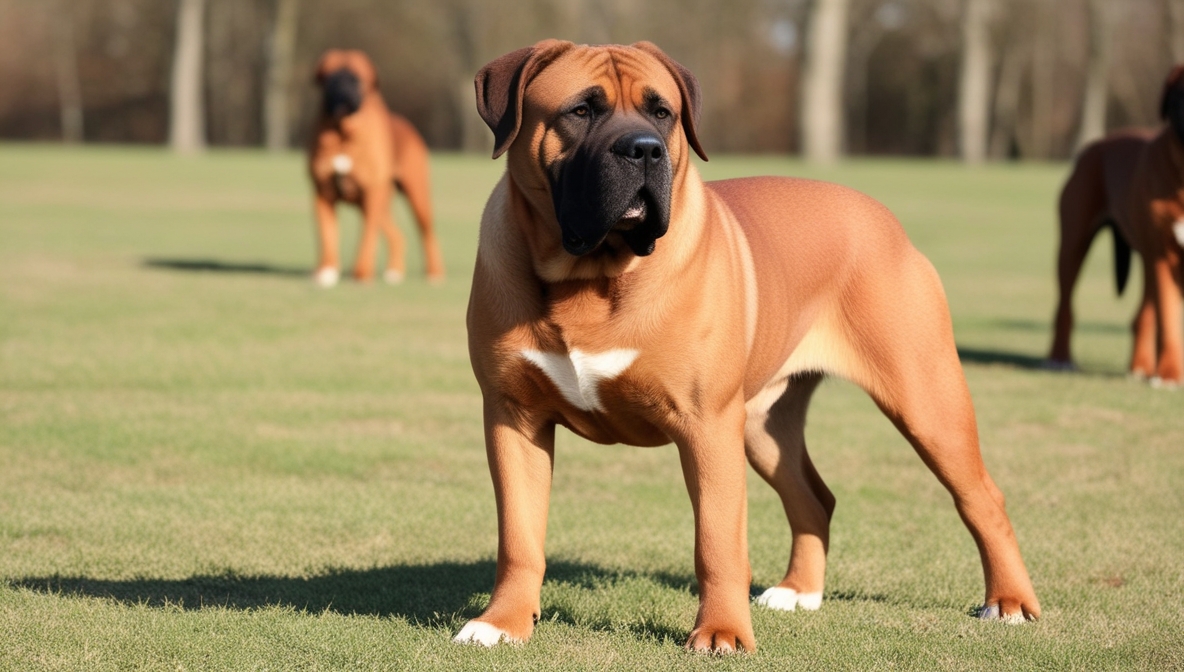
Introduction to the Dogue de Bordeaux
The Dogue de Bordeaux, also known as the French Mastiff, is one of the most ancient and powerful mastiff-type guardian dogs in the world. Recognized for its muscular build, broad head, and deeply wrinkled face, this breed embodies both strength and loyalty. Unlike some guardian breeds that display aloofness, the Dogue de Bordeaux combines a vigilant protective instinct with a deep devotion to its family.
This breed stands out not only for its size but also for its history. Known in France as the “Dogue de Bordeaux”, it originates from the Bordeaux region and has been used historically for guarding homes, pulling carts, and even hunting large game. Its enduring popularity comes from its courageous yet affectionate temperament, making it a reliable family companion when properly trained and socialized.
Physically, males often reach 23–27 inches (58–69 cm) at the shoulder and can weigh over 110 pounds (50 kg). Females are slightly smaller but still exhibit a powerful frame. Their short, fine coat comes in recognized shades of fawn, mahogany, and red, often with a black or brown mask.
The breed’s personality reflects an interesting duality: while they can appear intimidating to strangers, they show gentleness, loyalty, and affection to their human family. This makes them ideal for households that want both a loving companion and a reliable protector. However, due to their size and protective instincts, they are best suited to experienced dog owners who understand the importance of early training, consistent leadership, and socialization.
In this guide, we’ll cover everything about the Dogue de Bordeaux, from its historical origins and physical traits to training tips, health concerns, and ownership costs. Whether you’re considering adopting one or simply want to learn more about this majestic breed, this article provides a complete overview backed by semantic SEO terms such as guardian breed, French mastiff, temperament, exercise needs, and health care.
Origin and History of the Breed
The Dogue de Bordeaux boasts one of the longest histories among European dog breeds, with roots tracing back over 600 years. The breed originated in the Bordeaux region of France, from which it takes its name. Historically, the Dogue was bred as a mastiff-type working dog, designed to protect property, guard livestock, and assist butchers by handling large animals.
Experts believe that the Dogue de Bordeaux descends from ancient Molosser dogs, a category of large, strong working dogs from which many modern mastiff breeds have developed. These Molossers were introduced to France by the Romans, who valued their strength and guarding abilities. Over time, French breeders refined these dogs into the Bordeaux Mastiff we know today.
In the Middle Ages, the Dogue was employed for a variety of demanding tasks. Some were used as war dogs, while others served in bull-baiting and boar hunting. However, their most consistent role was that of a guardian—protecting estates, farms, and vineyards. This function is what preserved the breed even through turbulent historical periods.
During the French Revolution (1789–1799), the breed nearly disappeared, as many aristocrats who owned them were executed, and their estates destroyed. Despite this decline, the Dogue de Bordeaux survived, thanks to rural farmers who continued to breed them as practical working dogs.
The breed gained international attention in the late 20th century, particularly after its appearance in the Hollywood movie “Turner & Hooch” (1989), where a Dogue named Beasley starred alongside Tom Hanks. This exposure introduced the breed to millions of viewers and sparked worldwide interest.
Dogue de Bordeaux in Modern Culture
The Dogue de Bordeaux holds a unique place in modern culture, blending its ancient guardian heritage with pop culture fame. One of the most iconic appearances of the breed was in the 1989 film “Turner & Hooch”, where the lovable and slobbery Dogue named Hooch stole the show alongside actor Tom Hanks. This film introduced millions of people worldwide to the breed, dramatically increasing its popularity outside France.
Since then, the Dogue de Bordeaux has appeared in other movies, television shows, and advertising campaigns, often portrayed as both intimidating and comically lovable. Its massive size, wrinkled face, and droopy expression make it instantly recognizable, even to audiences unfamiliar with the breed.
In France, the breed is considered a national treasure and symbolizes both strength and loyalty. French culture often associates the Dogue with Bordeaux vineyards and estates, where historically, they protected property and livestock. The breed’s enduring association with vineyards ties it to the identity of the Bordeaux region itself.
Beyond pop culture, the Dogue de Bordeaux has gained recognition in dog sports and competitions. While it is not a high-energy agility dog, it excels in obedience trials, protection work, and conformation shows. International competitions often showcase the breed’s commanding appearance and confident personality.
On social media platforms like Instagram and TikTok, the Dogue has built a modern fan base. Owners frequently post videos highlighting the breed’s gentle interactions with children, funny expressions, and protective behaviors. These posts reinforce the duality of the breed: a giant with a tender heart.
Recognized Names and Synonyms
The Dogue de Bordeaux is widely known by several names, reflecting its history and cultural background. The most common alternative name is the French Mastiff, a straightforward label that identifies both its national origin and its mastiff-type classification. In English-speaking countries, this synonym is often used interchangeably with the official name, especially for those unfamiliar with French pronunciation.
Another recognized variation is the Bordeaux Mastiff, which emphasizes the city of Bordeaux in southwestern France, where the breed was historically concentrated. Some references also shorten the name simply to Dogue, particularly in older French literature. Each of these terms refers to the same breed, but the different names carry slightly different connotations. For example, “French Mastiff” highlights strength and nationality, while “Dogue de Bordeaux” preserves the traditional and authentic French identity.
The Fédération Cynologique Internationale (FCI), which standardizes dog breeds internationally, recognizes the official name as Dogue de Bordeaux. The American Kennel Club (AKC) and United Kennel Club (UKC) also use this designation, although the French Mastiff label is still commonly used in casual conversation.
When it comes to search intent and semantic SEO, including synonyms such as “French Mastiff,” “Bordeaux Mastiff,” and “Bordeaux Dog” helps capture a broader audience. These variations appear frequently in online searches, adoption listings, and breeder websites, ensuring that people searching under any of these names find relevant information.
In addition to synonyms, the breed is sometimes confused with related mastiff breeds like the English Mastiff, Neapolitan Mastiff, and Cane Corso. While these breeds share ancestry in the Molosser family of dogs, the Dogue de Bordeaux is distinct due to its shorter coat, unique head structure, and French origins.
Breed Classification and Kennel Club Recognition
The Dogue de Bordeaux belongs to the mastiff-type working group, and its classification varies slightly depending on the kennel club. Globally, it is recognized as a guardian breed, bred specifically for protection, companionship, and loyalty.
The American Kennel Club (AKC) places the Dogue de Bordeaux in the Working Group, which includes breeds designed to perform essential tasks such as guarding property, pulling sleds, or assisting in rescue operations. The breed officially joined the AKC in 2008, marking its acceptance into the mainstream American dog community.
The Fédération Cynologique Internationale (FCI), the world canine organization, recognizes the Dogue de Bordeaux under Group 2: Molossoid breeds, specifically in the Mastiff type category. This classification highlights its shared ancestry with other large guardian dogs like the Bullmastiff and Neapolitan Mastiff.
The United Kennel Club (UKC) also classifies the breed under its Guardian Dog Group, reflecting its primary role as a protector and companion. Each kennel club sets breed standards, covering aspects such as height, weight, temperament, and appearance. For example, the AKC standard specifies that males should ideally stand 23–27 inches tall and weigh at least 110 pounds, while females should be slightly smaller but equally proportioned.
These breed standards are not just for show competitions—they also guide breeders to maintain the health, temperament, and distinctive traits of the Dogue de Bordeaux. The standards emphasize its broad, powerful head, muscular frame, and loyal temperament, ensuring the breed’s historical qualities are preserved.
Recognition by multiple kennel clubs around the world also promotes the preservation and responsible breeding of the Dogue de Bordeaux. It creates uniformity in what defines the breed while allowing for cultural variations in how it is raised and appreciated.
Physical Appearance of Dogue de Bordeaux
The Dogue de Bordeaux is instantly recognizable due to its muscular build, massive head, and expressive wrinkles. This breed’s physical appearance commands attention and often intimidates strangers, though its gentle temperament contrasts with its imposing look.
The Dogue has one of the largest head-to-body ratios among all dog breeds, with males displaying particularly broad skulls and well-defined wrinkles. The breed standard emphasizes a short muzzle, strong jaw, and loose skin around the face, giving it a distinctive, almost lion-like expression. Its eyes are oval-shaped and set wide apart, while its ears are small, hanging down close to the cheeks.
In terms of size, the Dogue is classified as a giant breed. Adult males typically measure 23–27 inches (58–69 cm) at the withers and weigh over 110 pounds (50 kg), while females are slightly smaller but still powerful, usually ranging between 99–120 pounds (45–54 kg). Despite their bulk, Dogues are surprisingly agile for short bursts, capable of moving with power and coordination.
The coat is short, fine, and soft to the touch, requiring minimal grooming. Recognized colors include fawn, mahogany, and red, often accompanied by a black or brown mask around the muzzle. White markings on the chest or toes are acceptable but not required by breed standards.
Another hallmark feature is the broad chest and muscular shoulders, which contribute to the breed’s reputation as a formidable protector. Its thick neck and deep chest were originally designed to handle the physical demands of guarding, pulling, and even hunting. The tail is medium-length, thick at the base, and tapers to a point.
This appearance is not just aesthetic—it reflects the breed’s function as a working guardian. The wide stance, muscular build, and powerful jaw were bred for strength and defense. However, the droopy lips and expressive eyes soften its look, often endearing it to families.
Temperament and Personality Traits
The temperament of the Dogue de Bordeaux is one of its most defining qualities, balancing protectiveness with affection. Known for being loyal, devoted, vigilant, and even-tempered, this breed is an excellent choice for families seeking both companionship and security.
At home, the Dogue is deeply attached to its owners, often forming a strong emotional bond with one person while still being affectionate to the entire family. Its loyalty is unmatched, and it is known to shadow its owners from room to room. Despite its intimidating appearance, the Dogue is often gentle and patient with children, making it a reliable family dog when properly socialized.
When it comes to strangers, the breed’s vigilant guardian instinct becomes clear. Dogues are naturally wary of outsiders but not unnecessarily aggressive. They will typically observe before reacting, standing as a protective presence until they sense no threat. This makes them effective guard dogs without being uncontrollably hostile.
Another notable personality trait is the Dogue’s calm and even-tempered nature. Unlike high-energy breeds, it does not require constant stimulation to remain balanced. However, it does enjoy daily exercise and mental engagement, which helps prevent boredom-related behaviors.
While affectionate, the Dogue de Bordeaux is also known for its stubborn streak. This is common among mastiff breeds and means that early training and consistent leadership are crucial. Without firm but gentle guidance, they may develop dominant tendencies. Positive reinforcement methods work best, as harsh discipline can damage trust and worsen stubbornness.
The breed also thrives on companionship and may suffer from separation anxiety if left alone for extended periods. This sensitivity reflects its devoted and loving character, further reinforcing its reputation as a family-centered dog.
Conclusion:
The Dogue de Bordeaux, also known as the French Mastiff or Bordeaux Mastiff, is a breed that perfectly embodies both power and devotion. With its imposing physical appearance, deeply loyal temperament, and centuries-old history as a guardian dog, it stands among the most respected mastiff-type breeds in the world.
For families and individuals seeking a protector that doubles as a loving companion, the Dogue offers unmatched value. Its even-tempered nature allows it to integrate smoothly into households with children, while its vigilant instincts ensure that the home is always watched over. This dual role—as both family dog and guardian—makes it a breed of balance, combining strength with affection.
However, potential owners must approach the Dogue de Bordeaux with realistic expectations. This is not a breed for casual or inexperienced dog owners. Its size, stubbornness, and protective instincts demand a confident handler who can provide early training, consistent leadership, and proper socialization. Without these, the breed may develop problematic behaviors.
Health is another important consideration. The Dogue de Bordeaux is prone to issues such as hip dysplasia, heart disease, and skin conditions, with an average lifespan of 8–10 years. Responsible ownership means committing to veterinary care, high-quality nutrition, joint support, and regular exercise tailored to a large guardian breed.
In terms of living conditions, this breed thrives best in homes with ample space—preferably with a yard. While it can adapt to indoor living, it is not well-suited for apartment dwellers due to its size and guarding instincts. Regular walks, moderate exercise, and mental stimulation are essential to keeping it balanced and happy.
For those willing to meet its needs, the Dogue de Bordeaux offers profound rewards. It is a breed that builds unshakable bonds, demonstrating loyalty, devotion, and protection like few others can. Its presence is both reassuring and heartwarming—an imposing guardian who transforms into a gentle giant within the family circle.
In conclusion, the Dogue de Bordeaux is ideal for experienced dog owners who want a breed that combines majestic power with heartfelt companionship. It is not the easiest breed to raise, but for those who can provide the right environment, the Dogue de Bordeaux proves to be a once-in-a-lifetime companion—a true testament to the enduring legacy of the French Mastiff.
